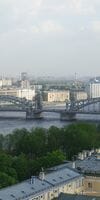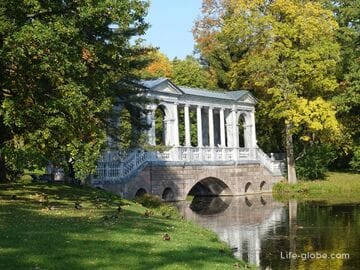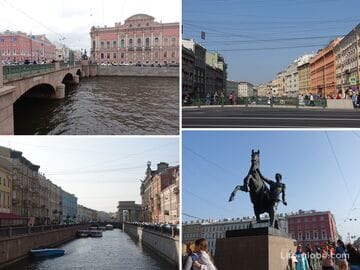Bolsheokhtinsky Bridge is one of the bridges across the Neva River in St. Petersburg.
Bolsheokhtinsky Bridge is one of the most beautiful and largest bridges in St. Petersburg. Also, this bridge was the first bridge on the Neva River, which provided the greatest convenience for navigation.
The popularity of the bridge is also given by the fact that the Bolsheokhtinsky bridge is a drawbridge.
The historical nameof the bridge : Peter the Great Bridge.
Bolsheokhtinsky Bridge connects the Central District of St. Petersburg with the Krasnogvardeysky district (Bolshaya Okhta).
Upstream of the Bolsheokhtinsky Bridge is the Alexander Nevsky Bridge, downstream is the Liteyny Bridge.
The total length of the Bolsheokhtinsky bridge is 336.1 meters, and its width is 26 meters. The bridge consists of 3 spans, with a central drawbridge.
The most beautiful panoramic view of the bridge and the Neva River opens from the observation decklocated in the belfry Smolny Cathedral.
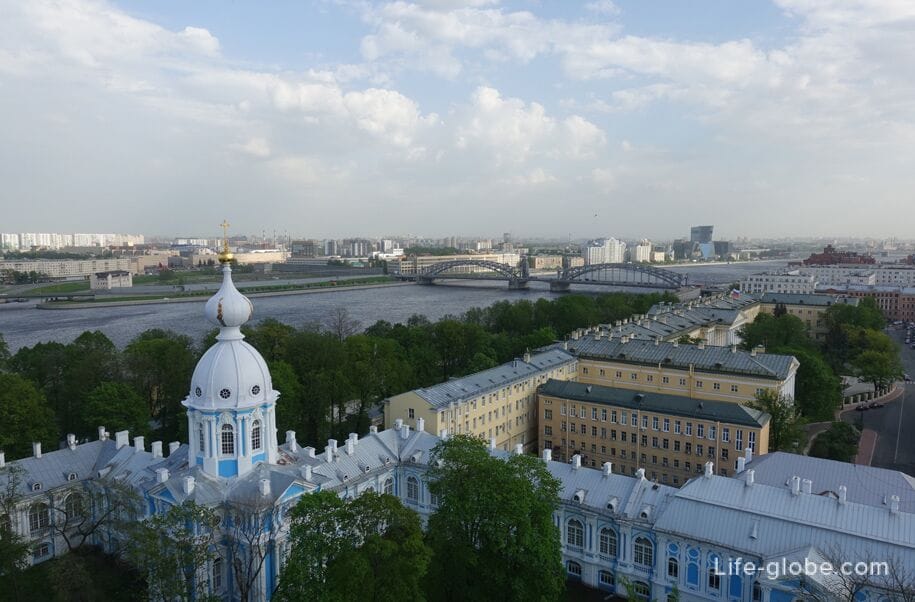
On the bridge there are two towers with a height of 36 meters from the water ordinary, on the upper platforms of which there were mirror lanterns. These towers are called lighthouse towers, because they light up the approaches to the drawbridge at night for ships. Inside the towers, the mechanisms of the draw span are placed, and memorial plaques with the names of the builders are installed outside.
The side spans (from the drawbridge) are covered with metal arched trusses.
The bridge supports and the descent to the water are lined with granite.
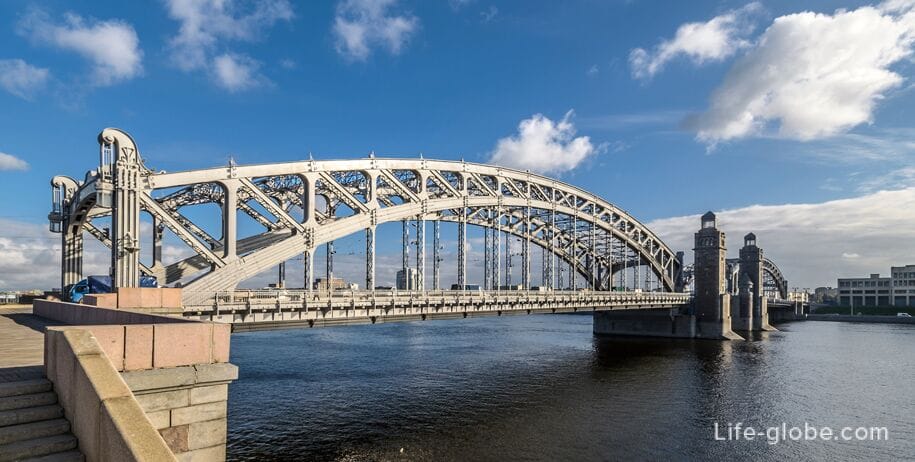
Bolsheokhtinsky Bridge is a roadway, with a ride on the bottom.
Pedestrian sidewalks run along both sides of the bridge.
The bridge is illuminated by 1300 lamps.
The metal structures of the bridge are made with the help of rivets.
The mota offers beautiful views of the Neva River and the surrounding area.
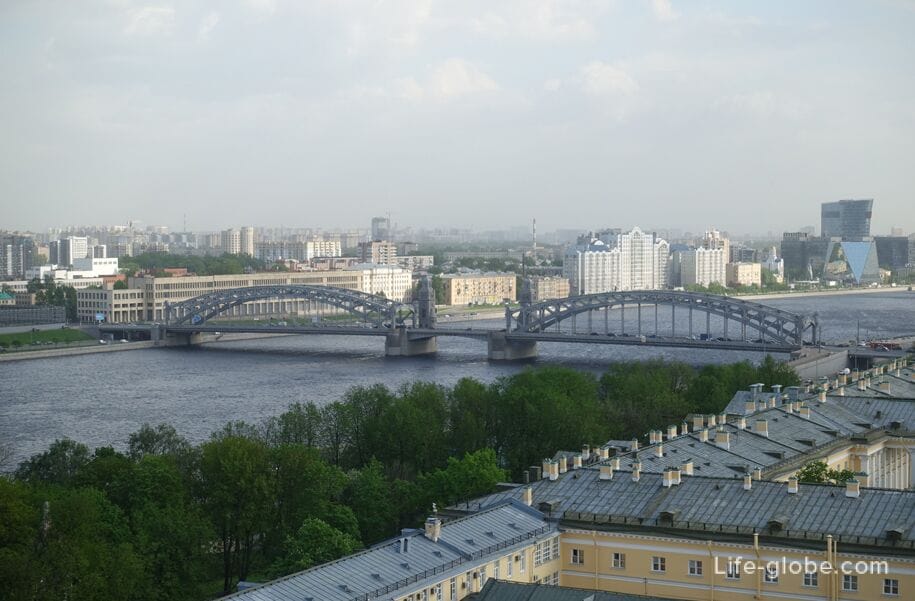
Divorce of the Bolsheokhtinsky bridge
One of the most popular sights in St. Petersburg is the bridge crossing.
In total, 9 bridges are regularly built in the city, and three more-according to preliminary applications.
Bridges in St. Petersburg are built regularly, annually - from April to November, at night.
Bolsheokhtinsky Bridge is being built after Palace, Troitsky, Blagoveshchensk and Liteyny bridges.
At the Bolsheokhtinsky Bridge, a central double-wing span is being built. A movable superstructure with a fixed axis of rotation. The size of the draw span is 48 meters, while the size of the two side non - draw spans is 136 meters. The total weight of the metal structures of the bridge is 8920 tons, including the weight of the counterweights of the draw span is 1065 tons.
The wiring mechanisms are located in two high towers installed on platforms on both sides of the draw span. Read more about the divorce of all bridges in St. Petersburg (with photos)…
We recommend checking the exact time of the bridges in St. Petersburg, including Bolsheokhtinsky, on the official website: mostotrest-spb.
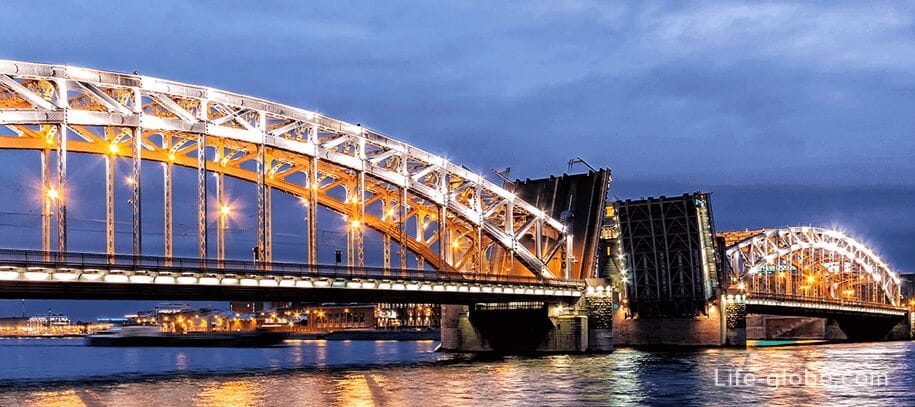
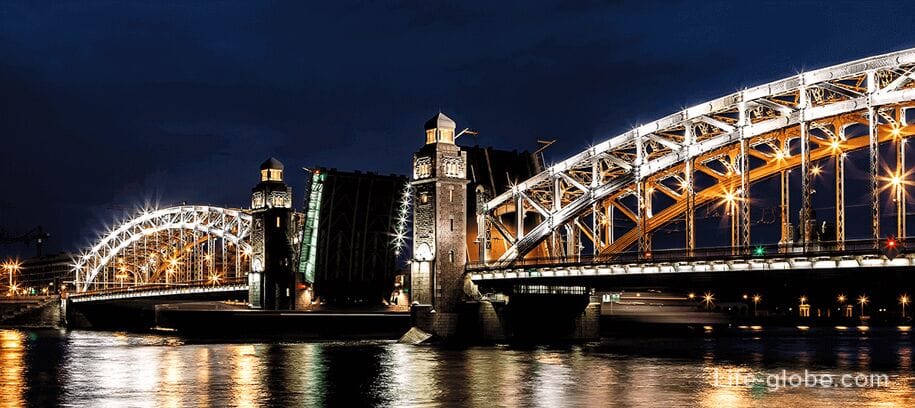
The history of the Bolsheokhtinsky Bridge
In 1860, when it was decided to make Okhta, where the Okhta River flows into the Neva, an administrative district of the city, it became necessary to build a bridge. Up to this point, the crossing of the Neva River was limited to boat transportation.
The bridge project was approved in September 1907. The project was developed by Professor of the Nikolaev Engineering Academy Grigory Krivoshein and military engineer Vladimir Apyshkov.
The solemn laying of the bridge took place on June 26, 1909, the day before the celebration of the 200th anniversary of the Battle of Poltava. For this reason, the bridge was originally named in honor of Emperor Peter the Great.
The construction of the bridge was carried out by the Warsaw plant "Rudzsky and Co.". The mechanism of the adjustable span was manufactured by the St. Petersburg Metal Plant.
The crossing was officially opened on October 26, 1911, but some construction work continued until 1913. At the time of the bridge's opening, its side spans were the longest in St. Petersburg, and the bridge was also decorated with granite lighthouse towers that illuminated the approaches to the bridge at night and illuminate the ships.
After the revolution of 1917, the Peter the Great Bridge was renamed Bolsheokhtensky, and since 1956, taking into account the new spelling rules, it began to bear the name "Bolsheokhtinsky".
In the future, the bridge was reconstructed and repaired, but, at the same time, the appearance, architecture and dimensions of the Bolsheokhtinsky Bridge were completely preserved.
In 1993-1997, during the large-scale reconstruction of the draw span and mechanisms, the inscription "Bridge of Emperor Peter the Great"was restored on the bridge.
Once there were trams on the bridge, the movement of which was stopped in 2005, and 5 years later the tram rails were also removed.
In 2011, Bolsheokhtinsky Bridge celebrated its centenary. In October-November of the jubilee year, the left-bank tower of the bridge was opened to visitors for the first time for two weeks.
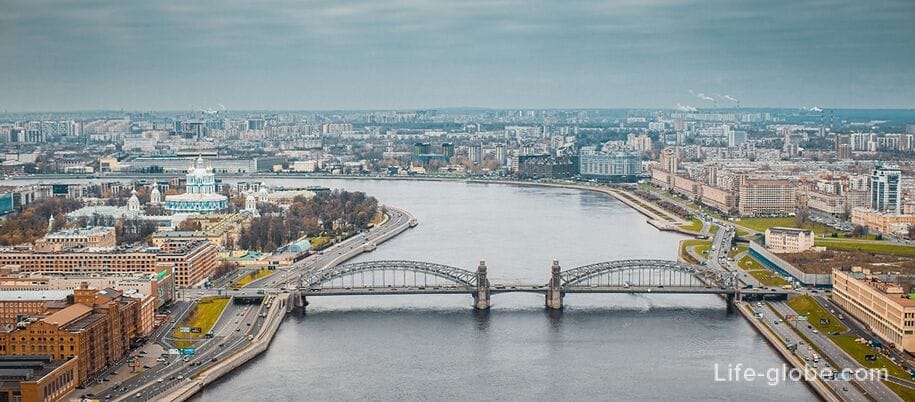
Practical information
Coordinates of Bolsheokhtinsky Bridge: 59°56'33.0"N 30°24'04.0"E (59.942500, 30.401111).
Nearest metro stations: "Chernyshevskaya", "Novocherkasskaya" and "Vosstaniya Square".
All accommodation facilities in St. Petersburg, including in the city center and more remotely from it, can be viewed and booked here




